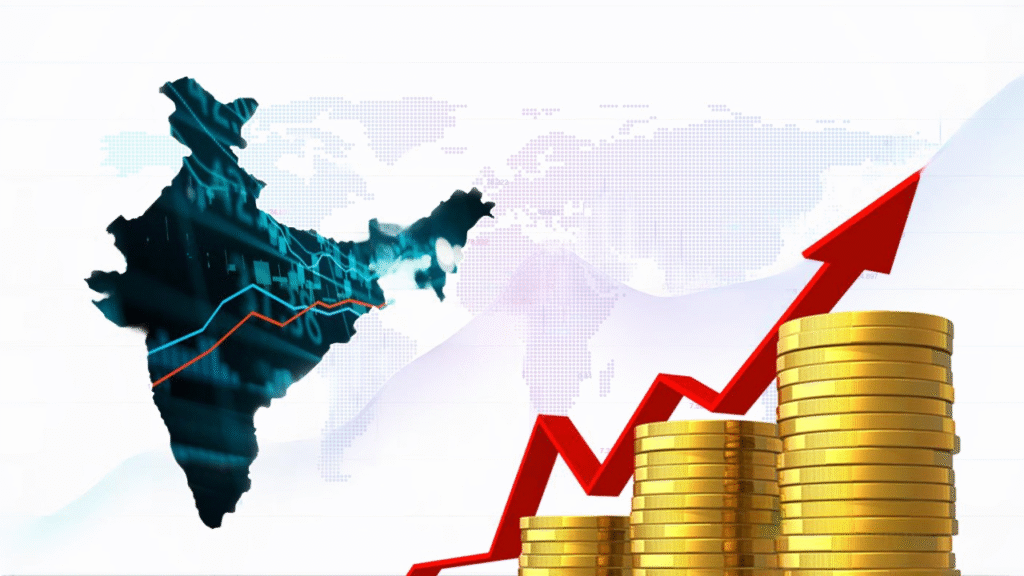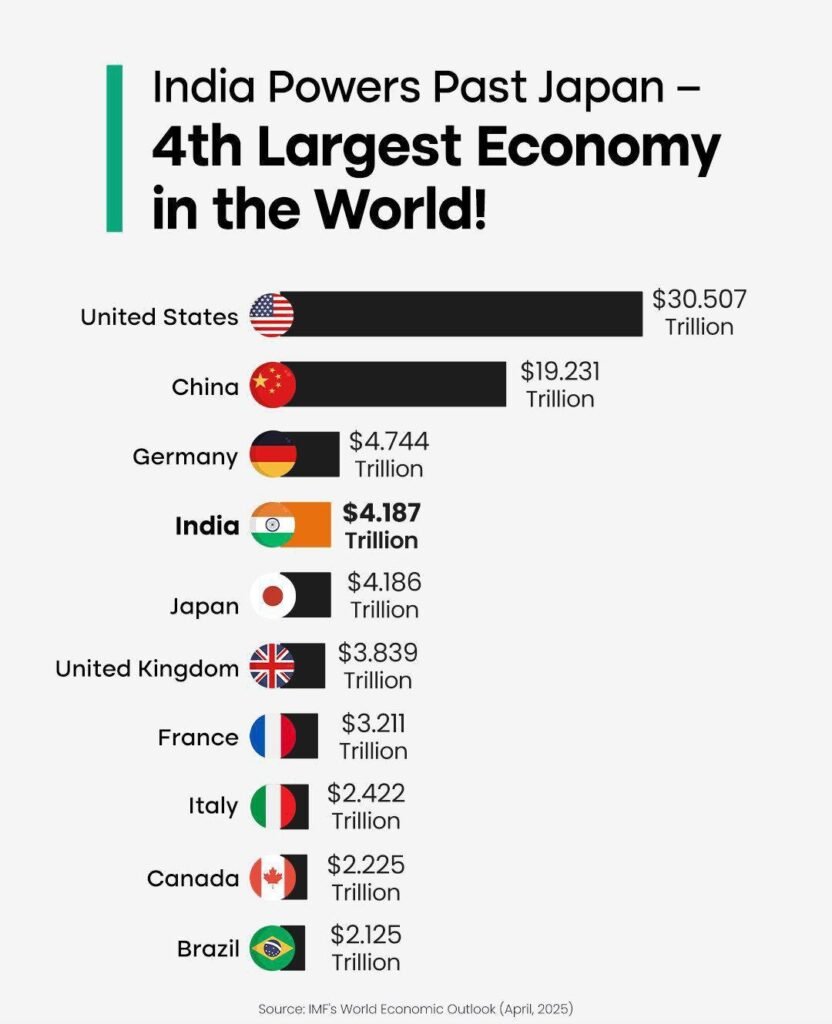India has officially emerged as the fourth-largest economy in the world, overtaking Japan, according to the latest estimates from the International Monetary Fund (IMF). The country’s GDP has reached $4 trillion, placing it behind only the United States, China, and Germany.

The announcement was made following the 10th Governing Council meeting of NITI Aayog. The think tank attributed this economic advancement to a combination of sustained domestic reforms and a favourable global environment that has boosted India’s economic prospects.
Data from the National Statistical Office (NSO) shows that India’s economy recorded consistent growth in the ongoing fiscal year: 6.5% in the first quarter, 5.8% in the second, and 6.2% in the third. These figures highlight a stable growth trajectory as the country strengthens its global economic standing.
India’s recent rise is also backed by its strategic positioning as a competitive alternative in global manufacturing and supply chains. With rising global interest in diversifying production bases, India is seen as a major beneficiary due to its cost efficiency and expanding infrastructure.

In line with this momentum, the Indian government is preparing to roll out the second phase of its asset monetisation programme by August, aiming to attract more private investment into infrastructure and public sector assets.
India is now setting its sights on becoming the world’s third-largest economy within the next three years, reinforcing its commitment to economic transformation through policy reforms and the ‘Make in India’ initiative.

